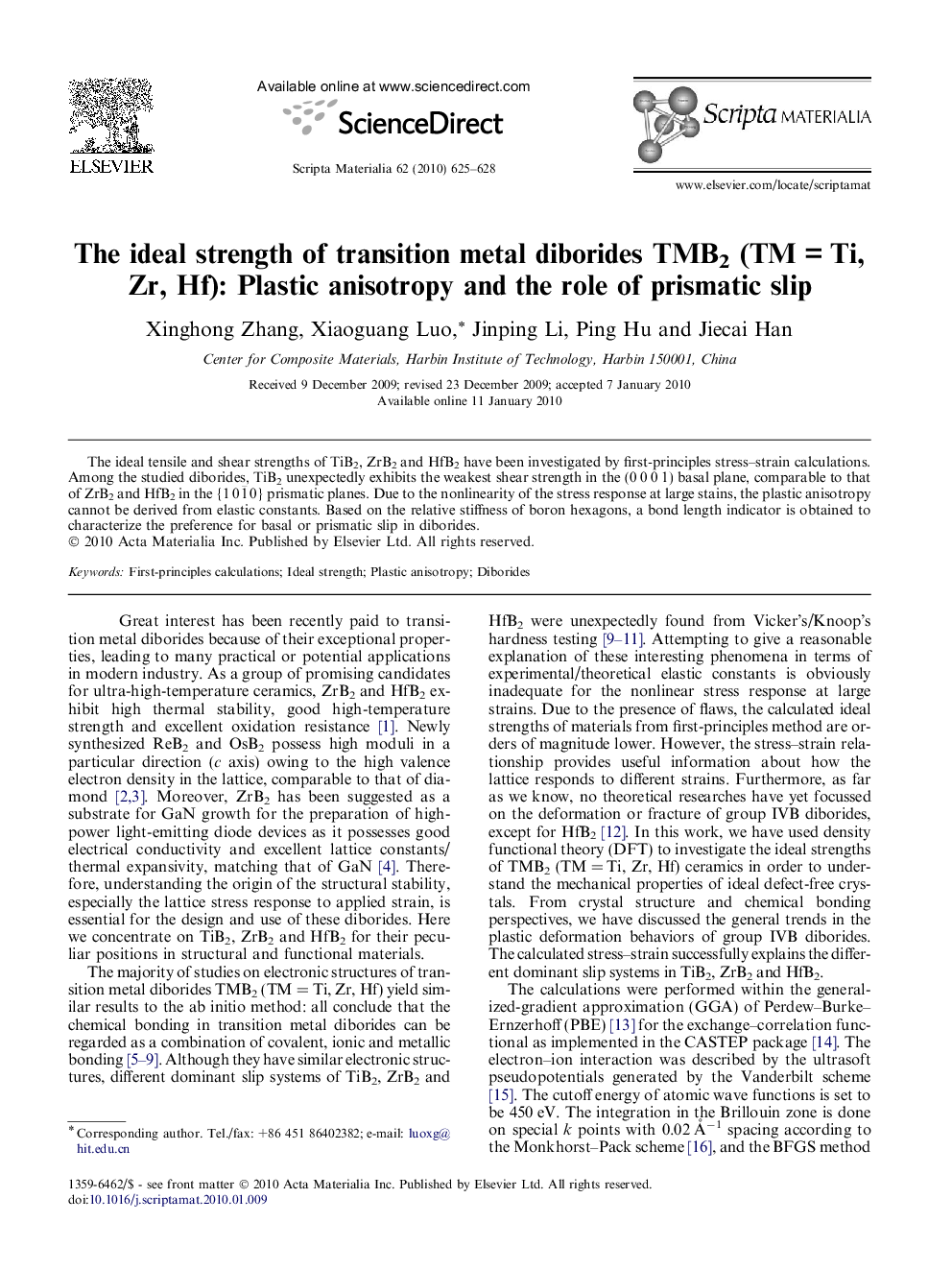| Article ID | Journal | Published Year | Pages | File Type |
|---|---|---|---|---|
| 1501344 | Scripta Materialia | 2010 | 4 Pages |
Abstract
The ideal tensile and shear strengths of TiB2, ZrB2 and HfB2 have been investigated by first-principles stress–strain calculations. Among the studied diborides, TiB2 unexpectedly exhibits the weakest shear strength in the (0 0 0 1) basal plane, comparable to that of ZrB2 and HfB2 in the {101¯0} prismatic planes. Due to the nonlinearity of the stress response at large stains, the plastic anisotropy cannot be derived from elastic constants. Based on the relative stiffness of boron hexagons, a bond length indicator is obtained to characterize the preference for basal or prismatic slip in diborides.
Related Topics
Physical Sciences and Engineering
Materials Science
Ceramics and Composites
Authors
Xinghong Zhang, Xiaoguang Luo, Jinping Li, Ping Hu, Jiecai Han,
